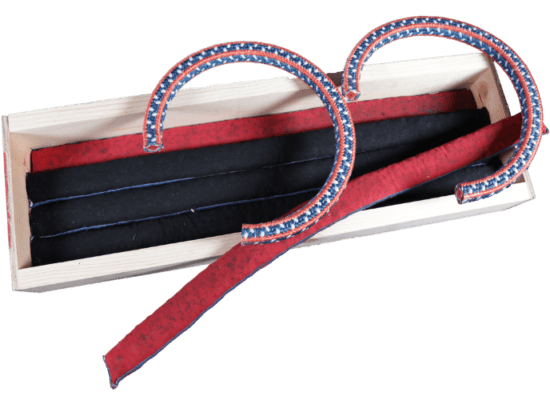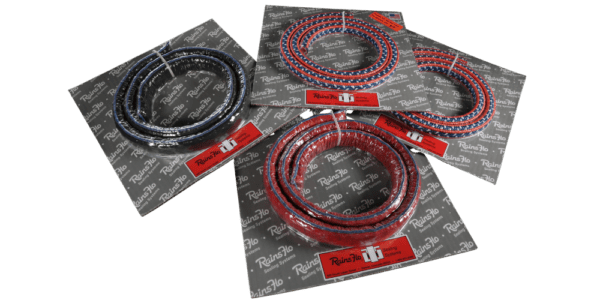Packing seals are vital components in various industrial applications, ensuring the integrity and efficiency of machinery. These seals prevent fluid leakage, maintain pressure, and protect against contaminants. Extending the life of your packing seals can significantly enhance your system’s performance and reduce maintenance costs. In this article, we will explore how to maximize the longevity of your packing seals, focusing on the benefits of self-lubricating packing seals and the importance of a robust packing seal system.
Understanding Packing Seals
A packing seal, also known as a shaft seal or mechanical seal, is used in pumps and valves to prevent fluid from leaking along the shaft. These seals are essential in industries such as oil and gas, water treatment, chemical processing, and more. The primary function of a packing seal is to provide a barrier that keeps the fluid contained within the system while allowing the shaft to rotate freely.
Packing seals are typically made from materials like graphite, PTFE (polytetrafluoroethylene), and other high-performance composites. We choose these materials for their ability to withstand extreme temperatures, pressures, and chemical exposures. The material chosen depends on what is needed for the job, like the kind of liquid being sealed and how the system is used.
Types of Packing Seals
There are several types of packing seals, each designed for specific applications and conditions. Understanding these types can help you select the right seal for your needs:
- Compression Packing: This type are made from braided or twisted fibers, which are compressed into the stuffing box around the shaft. It is commonly used in valves and pumps to prevent leakage.
- Lip Seals: Lip seals are made from elastomeric materials and have a lip that presses against the shaft to create a seal. They are used in applications where low friction and minimal wear are essential.
- Mechanical Seals: Mechanical seals consist of two flat surfaces, one stationary and one rotating, that press together to create a seal. They are used in high-pressure and high-temperature applications.
- O-Rings: O-rings are simple, circular seals made from elastomeric materials. They are used in a variety of applications, from hydraulic systems to water pumps.
Benefits of Self-Lubricating Packing Seals
Self-lubricating packing seals are designed to minimize friction and wear by incorporating lubricants within the seal material. This innovative approach offers several advantages:
- Reduced Maintenance: Self-lubricating packing seals require less frequent maintenance, as they are designed to minimize wear and tear. This reduces downtime and maintenance costs. The self-lubricating feature ensures that the seal remains effective over a longer period, even in demanding conditions.
- Enhanced Durability: The built-in lubricants help to distribute heat evenly, preventing overheating and extending the seal’s lifespan. This is particularly beneficial in high-speed applications where heat generation is a concern.
- Improved Performance: With reduced friction, self-lubricating packing seals enhance the overall efficiency of the system, leading to better performance and energy savings. The reduced friction also means that the system requires less power to operate, resulting in lower energy consumption.
- Versatility: These seals are suitable for a wide range of applications, including high-temperature and high-pressure environments. They are also compatible with various fluids, including water, oil, and chemicals, making them a versatile choice for many industries.
Key Factors to Extend the Life of Packing Seals
To ensure the longevity of your packing seals, it is crucial to consider several factors:
- Proper Installation: Correct installation is critical to the performance and lifespan of packing seals. Ensure that the seal is installed according to the manufacturer’s guidelines to prevent premature failure. This includes proper alignment, adequate compression, and ensuring that the sealing surfaces are clean and free of debris.
- Regular Inspections: Conduct regular inspections to check for signs of wear, leakage, or damage. Early detection of issues can prevent more significant problems down the line. Inspections should include checking the condition of the seal material, looking for any signs of hardening, cracking, or excessive wear.
- Adequate Lubrication: Even with self-lubricating ones, it is essential to ensure that the system is adequately lubricated. This helps to reduce friction and wear, extending the seal’s life. Check the lubrication system often to make sure it works well and has enough lubricant. Keep the levels maintained.
- Quality Materials: Invest in high-quality packing seals made from durable materials. This is particularly important for applications involving harsh chemicals or extreme temperatures. High-quality materials are more resistant to wear and tear and can withstand the rigors of demanding industrial environments.
- Proper Storage: Store them in a clean, dry environment to prevent contamination and degradation of the seal material. Seals should be kept in their original packaging until they are ready to be used to protect them from dust, moisture, and other contaminants.
Importance of a Robust Packing Seal System
A comprehensive packing seal system is vital for maintaining the efficiency and longevity of your machinery. This system includes the seal itself, the housing, the lubrication mechanism, and the shaft. Ensuring that all components work together seamlessly is essential for optimal performance.
- Seal Selection: Choose the right packing seal for your specific application. Consider factors such as temperature, pressure, and the type of fluid being sealed. Consulting with the seal manufacturer or a specialist can help ensure that you select the most suitable seal for your needs.
- System Design: Design the sealing system to accommodate the operational conditions. This includes selecting appropriate materials, ensuring proper alignment, and providing adequate lubrication. The design should also consider the ease of maintenance and accessibility for inspections and replacements.
- Maintenance Program: Implement a regular maintenance program to monitor the condition of the packing seals and the overall system. This helps to identify and address issues before they lead to system failure. Maintenance should include routine inspections, lubrication checks, and timely replacement of worn or damaged seals.
Best Practices for Packing Seal Maintenance
Implementing best practices for packing seal maintenance can significantly extend their lifespan and improve system performance. Here are some tips to help you get the most out of your packing seals:
- Follow Manufacturer Recommendations: Always follow the manufacturer’s recommendations for installation, operation, and maintenance. These guidelines are designed to ensure optimal performance and longevity of the seals.
- Monitor Operating Conditions: Keep an eye on the operating conditions of your system, including temperature, pressure, and fluid levels. Any deviations from the normal operating conditions can indicate potential issues with the seals.
- Use Compatible Lubricants: Ensure that the lubricants used are compatible with the seal material and the fluid being sealed. Using the wrong lubricant can cause the seal material to degrade or swell, leading to premature failure.
- Train Personnel: Ensure that personnel responsible for installing and maintaining them are properly trained. This includes understanding the importance of proper installation techniques, regular inspections, and timely maintenance.
- Document Maintenance Activities: Keep detailed records of all maintenance activities, including inspections, lubrication, and replacements. This documentation can help identify patterns and potential issues, allowing for proactive maintenance and problem-solving.
Extending the life of your packing seals is crucial for maintaining the efficiency and reliability of your industrial systems. By choosing self-lubricating packing seals and implementing a robust packing seal system, you can reduce maintenance costs, enhance performance, and ensure the longevity of your equipment.
At Rainsflo, we offer a wide range of high-quality packing seals designed to meet the demands of various industrial applications. Contact us today to learn more about our products and how we can help you extend the life of your packing seals. Our team of experts is ready to assist you in selecting the right seals for your specific needs and providing support for installation, maintenance, and optimization of your sealing systems.
 RainsFlo
RainsFlo 